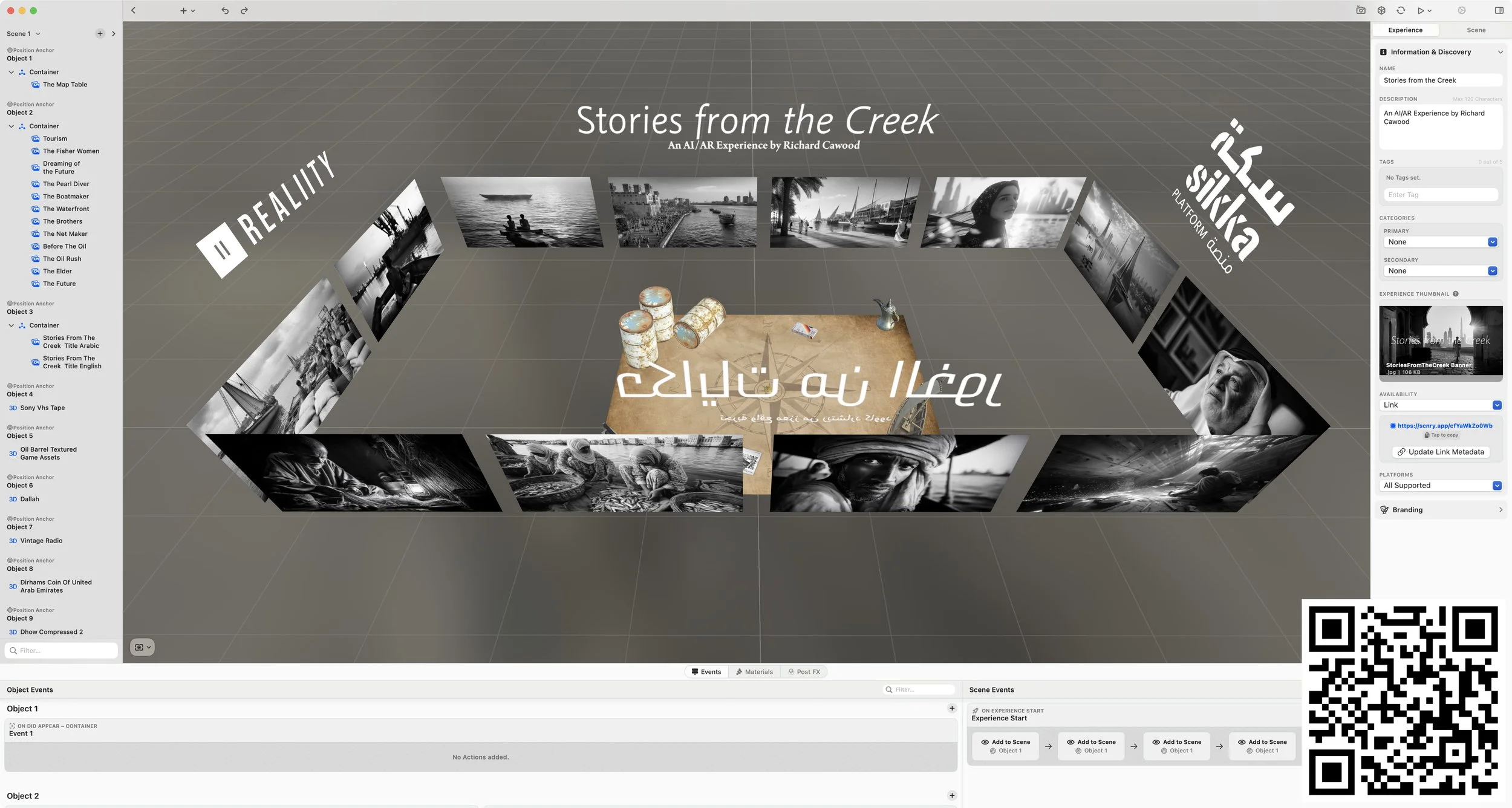After Aero’s Sunset, I Rebuilt my AI/AR Project in Scenery
Scan the QR code to launch the experience on your iPhone or iPad.
In early September of this year, a few students from the Spring semester's ART 397 Special Topics course stopped me in the hallway with a mix of excitement and concern. They were excited because they had decided to use AR as a foundational part of their senior show project. They were concerned because they had seen one of my recent posts and asked if Adobe Aero was still in development and supported, and whether they could continue using it for augmented reality work. During class, we discussed Aero's Beta status in the spring and wondered if Adobe might announce a new version at MAX in October. There was cautious optimism that it might become a flagship app, but equal concern that it could quietly disappear. When the news came that Aero was being retired, it wasn't a surprise, but it still felt like the end of something meaningful. Aero had offered a gateway into spatial storytelling without the barrier of complex coding or heavy software. For many students and educators, it was a rare balance of accessibility and imagination. Learning that the app was soon to be shut down left an absence that felt larger than the app itself.
Rather than stay in that limbo, I decided to test what could follow. My goal was simple: to rebuild Stories from the Creek, the AI/AR project I had originally created in Aero, as a digital twin. I wanted to see if I could recreate the experience in a new platform, and to determine which tools might best support future teaching and creative work in AR.
After experimenting with several options, I found myself leaning into Scenery.app. It felt intuitive, design-centered, and distinctly modern. Scenery allows creators to build and preview spatial experiences using a visual editor rather than lines of code. It runs smoothly across iPhone, iPad, Mac, and Apple Vision, and uses App Clips to share projects without full installations. For educators, that simplicity matters. It means less friction and more time spent on storytelling.
Rebuilding Stories from the Creek in Scenery became a kind of translation exercise. I imported assets, realigned spatial anchors, adjusted timing, and rebuilt the sound triggers. There were small inconsistencies to fix, but overall, the process felt fluid. The live preview made the work feel alive again. I could move through the scene, make adjustments on the fly, and test how space and sound interacted in real time.
Scenery isn’t perfect. Its reliance on Apple’s ecosystem means that Android and Windows users remain on the outside for now. There’s no universal web viewer, and the ability to export or bridge experiences into WebXR is still unclear. Even so, the trade-offs feel manageable. Scenery is approachable, stable, and creatively rewarding. It strikes a balance between technical depth and artistic play that few platforms have managed.
With the digital twin of Stories from the Creek now complete, my attention is turning toward what comes next. Scenery offers new tools and possibilities that go beyond what Aero allowed. I plan to explore ways the project can evolve, experimenting with interactive triggers, layered sound, and generative visual elements. At the same time, I’ve begun thinking about how other projects might take shape here. The Faces of Mexico, my ongoing photographic series, will likely get a digital AR version, something visitors at XPOSURE could take home and experience in their own space.
For those who are also navigating the post-Aero landscape, here are several other AR tools worth exploring. Each serves a slightly different purpose and all contribute to the broader creative ecosystem.
8th Wall provides browser-based WebAR experiences that run without app installs.
Zapworks offers a full AR suite with both no-code and advanced tools, including Zapworks Studio and Zapworks Designer. It supports image and world tracking, spatial audio, and publishing to mobile or WebAR. For educators, it offers a balance between flexibility and simplicity. Mattercraft is Zapworks’ new browser-based 3D and AR editor designed for creating immersive web experiences. It combines visual editing, behaviors, scripting, and animation tools, and supports world, image, and face tracking directly in browsers. Mattercraft also integrates with Immersal’s Visual Positioning System, making geospatial AR possible without a native app.
Unity with AR Foundation or MARS provides robust cross-platform capabilities for more advanced projects.
Apple’s ARKit and Google’s ARCore remain the foundational frameworks for custom app development.
Vuforia continues to support markerless AR and object tracking, with years of reliability behind it.
Spark AR and Lens Studio remain useful for social AR creation, though their long-term future is uncertain.
Technology will keep shifting. Tools will rise and fall. What matters is the work that survives the transitions and the ideas that evolve through them.
This work continues the thread that runs through much of what I teach and make at Zayed University: how technology can expand, not replace, our ways of creating, seeing, and doing. With Stories from the Creek now reimagined in Scenery and new ideas forming, I’m already thinking ahead to how The Faces of Mexico might extend into a digital AR version, something visitors to XPOSURE could carry home and experience in their own space. The story keeps unfolding, just in new dimensions.
